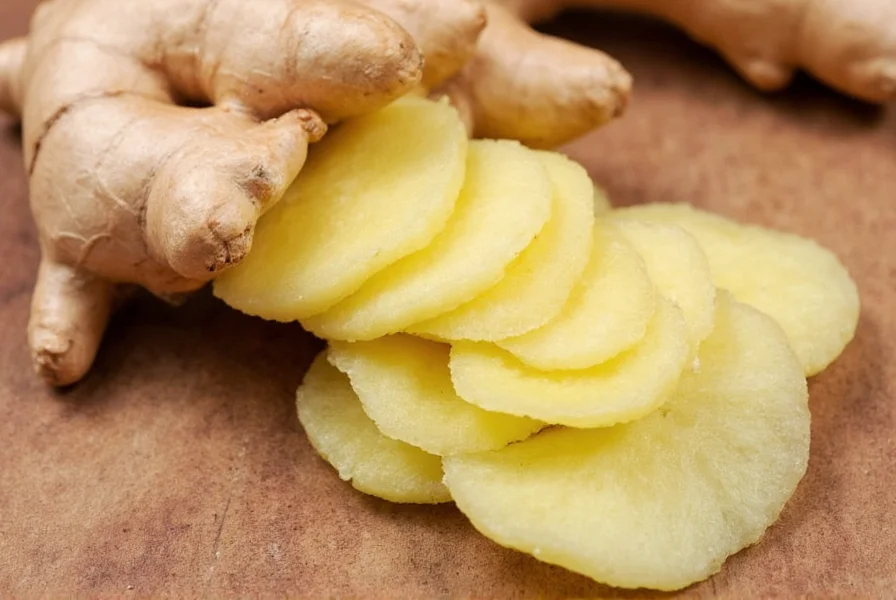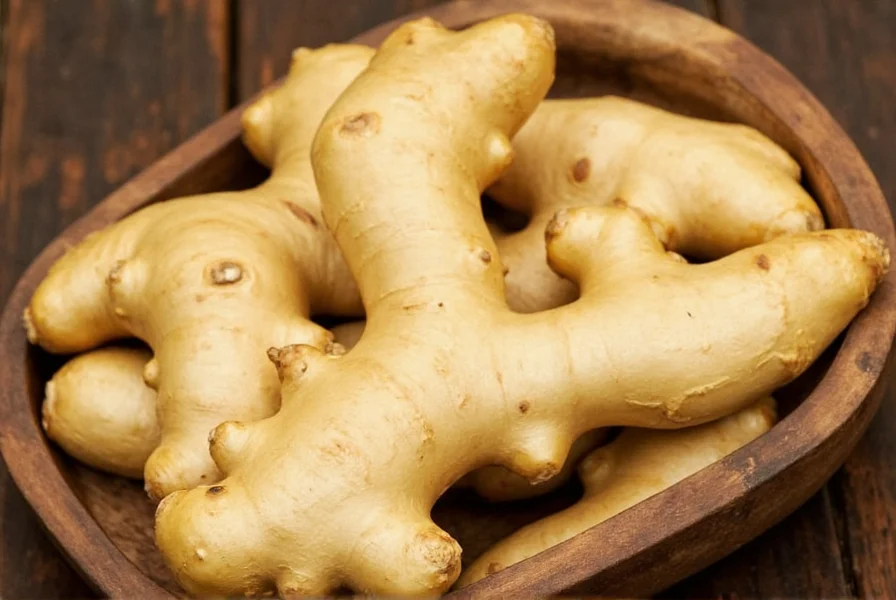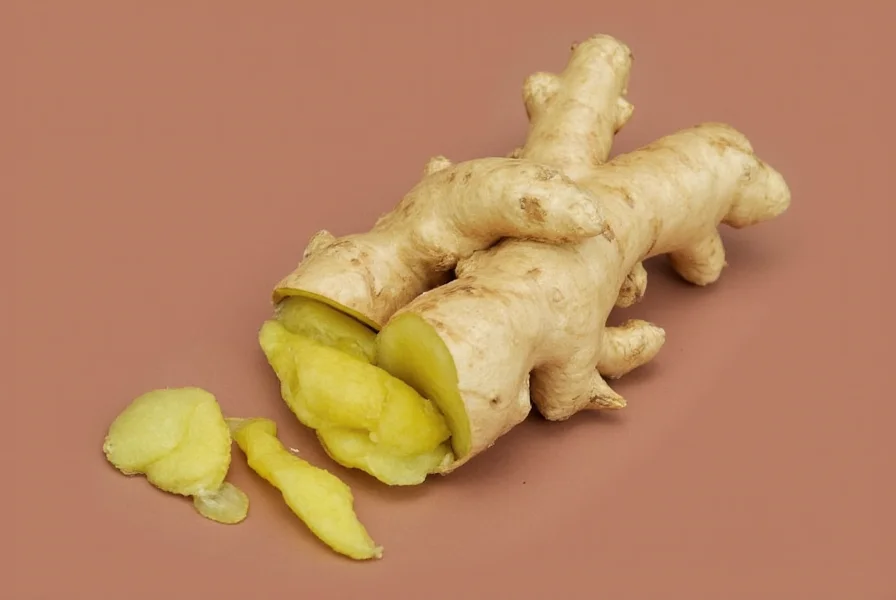Ginger isn't actually a root as many believe, but rather a rhizome—a horizontal underground stem that sends out roots and shoots. Understanding where ginger comes from requires exploring both its botanical origins and historical journey across continents.
The Botanical Origins of Ginger
Scientific research confirms that ginger's wild ancestor, Zingiber officinale var. officinale, evolved in the humid tropical forests of Maritime Southeast Asia. Archaeological evidence from ancient Indonesian sites shows ginger was used as early as 3000 BCE. The plant thrives in warm, humid conditions with rich soil and partial shade—conditions abundant in the Indonesian archipelago.
Unlike many plants with multiple possible origins, genetic studies of wild ginger varieties point conclusively to Indonesia as the primary center of diversity. The greatest variety of wild ginger species exists in this region, indicating long-term evolution in this environment.

Historical Spread of Ginger Cultivation
From its Indonesian birthplace, ginger traveled along ancient spice routes. By 2000 BCE, it had reached India where it became integral to Ayurvedic medicine. Indian traders then introduced ginger to the Middle East and Africa. Historical records show ginger reached China by the 3rd century BCE, where it was documented in the Shennong Ben Cao Jing, one of the earliest Chinese pharmacopeias.
The spice trade dramatically expanded ginger's reach. Arab merchants controlled the ginger trade until the 15th century, when European explorers sought direct routes to the "Spice Islands." Portuguese traders established ginger plantations in West Africa, while Spanish explorers brought it to the Caribbean and Central America.
Modern Ginger Production Around the World
Today, ginger cultivation spans tropical and subtropical regions worldwide. The top producers include:
| Country | Annual Production (Metric Tons) | Percentage of Global Supply |
|---|---|---|
| India | 1,000,000 | 35% |
| Nigeria | 650,000 | 23% |
| China | 550,000 | 19% |
| Indonesia | 180,000 | 6% |
| Nepal | 120,000 | 4% |
Despite India now being the world's largest producer, ginger's historical origin remains Southeast Asia. Nigerian ginger has gained prominence in global markets for its superior pungency and higher essential oil content, while Indian varieties are prized for their aromatic qualities.
Ginger Cultivation Process
Ginger requires specific growing conditions that mimic its native tropical environment. Farmers plant pieces of mature rhizome in well-drained, loamy soil with high organic content. The crop needs consistent moisture but cannot tolerate waterlogged conditions.
Ginger takes 8-10 months to mature. During this time, the plant develops leafy shoots above ground while the rhizome expands underground. Harvesting involves carefully digging up the rhizomes when the leaves begin to yellow and die back. Post-harvest, ginger is washed, cured, and prepared for various markets—fresh, dried, or processed.

Cultural Significance Through History
Ginger's journey from Southeast Asian forests to global kitchens reveals its remarkable cultural importance. In ancient China, it was considered so valuable that Confucius reportedly never appeared at the dinner table without it. Medieval European cookbooks featured ginger in nearly every savory dish, and it was one of the first spices traded along the Silk Road.
The historical origin of ginger explains why it features prominently in traditional medicine systems worldwide. From Indonesian jamu herbal remedies to Indian ayurveda and Chinese traditional medicine, ginger has been used for millennia to address digestive issues, inflammation, and respiratory conditions.
Understanding Ginger's Global Journey
Tracing where ginger comes from involves recognizing both its biological origins and human-mediated spread. While Indonesia remains the plant's evolutionary birthplace, ginger's adaptability allowed it to thrive in diverse tropical regions. This adaptability explains why ginger varieties differ significantly across growing regions—Nigerian ginger tends to be more fibrous and pungent, while Indian varieties offer more complex flavor profiles.
Modern genetic research continues to uncover ginger's history. Recent studies analyzing ginger DNA have confirmed the Southeast Asian origin while revealing how selective breeding by farmers across centuries created the diverse ginger varieties we know today. This research helps explain why certain ginger types excel in specific culinary applications, from the milder young ginger used in Japanese cuisine to the robust mature ginger preferred in Indian cooking.
What country did ginger originally come from?
Ginger originally comes from Maritime Southeast Asia, specifically the tropical regions of what is now Indonesia. Archaeological evidence shows it was cultivated there as early as 3000 BCE before spreading to other parts of Asia and eventually the world.
Is ginger native to India or China?
No, ginger is not native to India or China. While both countries have cultivated ginger for thousands of years and feature it prominently in their traditional medicine and cuisine, ginger actually originated in Maritime Southeast Asia. It reached India around 2000 BCE and China by the 3rd century BCE through ancient trade routes.
Why is Nigeria now the largest ginger producer?
Nigeria has become the world's largest ginger producer due to ideal growing conditions in its tropical climate, fertile soil, and favorable rainfall patterns. Nigerian ginger is particularly valued for its high pungency and essential oil content. Government agricultural initiatives and growing international demand have also contributed to Nigeria's dominance in global ginger production.
What's the difference between ginger root and rhizome?
Ginger is technically not a root but a rhizome, which is a horizontal underground stem. Roots grow downward from plants, while rhizomes grow horizontally beneath the soil surface. Rhizomes have nodes from which roots and shoots emerge, store nutrients, and can produce new plants. This distinction matters because rhizomes like ginger have different growth patterns and harvesting requirements than true roots.
How did ginger spread from Southeast Asia to other parts of the world?
Ginger spread from its Southeast Asian origin through ancient trade routes. Indian traders introduced it to the Middle East and Africa by 2000 BCE. It reached China by the 3rd century BCE. Arab merchants controlled the ginger trade until European explorers sought direct access to the "Spice Islands" in the 15th century. Portuguese traders established ginger plantations in West Africa, while Spanish explorers brought it to the Caribbean and Central America.











 浙公网安备
33010002000092号
浙公网安备
33010002000092号 浙B2-20120091-4
浙B2-20120091-4